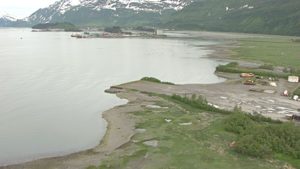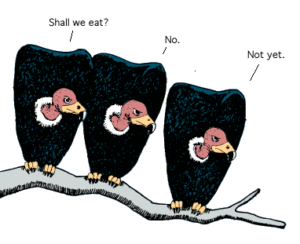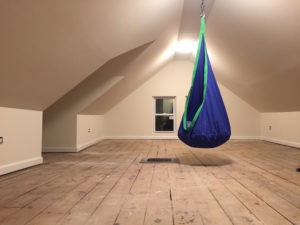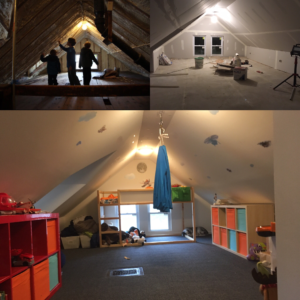A long time ago, from time-to-time, I worked with military personnel, most often legal counsel, the types that handle deals to procure real estate on which to build things, all kinds of things, from barracks to administrative offices, training facilities and storage solutions.
As it happened, I became great pals with one of these, who taught me a lot about User Experience Design (UX) without either of us knowing it.
Here’s the story, for no other reason than posterity and a reminder that important lessons are hidden everywhere, in the most unlikely places.
 One afternoon we were hanging out in Valdez, while he was spotting for a helicopter scheduled to deliver specialized telecom equipment.
One afternoon we were hanging out in Valdez, while he was spotting for a helicopter scheduled to deliver specialized telecom equipment.
The heli was late so we’d been hanging around shooting the breeze. I learned he wasn’t a stereotypical military type. It was 2011, and he was critical of the motivations of the current administration. I didn’t have much to say, honestly, but I was listening. As we talked, we were looking at schematics, spread out on the hood of his truck, drafted for a complete power, electrical, data and communications infrastructure upgrade for a declassified training and administrative facility. He told me:
“You know, people can say a lot of things about the military but, truth is, we know a lot of things about a lot of things just from having so much experience solving the same kinds of challenges over and over, again. Take this project, for example.”
“Most commercial construction project managers wouldn’t walk away and call a project completed until every last “i” is dotted, including the landscaping, footpaths, parking facilities and whatnot.”
Puzzled, I asked him to explain.
“The military knows when to act and when to be patient, unlike the majority of corporate America. Once a facility like this is built, we wait until people start to use it. We might design some initial parking and other features that have an obvious place, based on proximity and whatnot, but footpaths and landscaping don’t go in until we see how people naturally use it.”
 This made perfect sense to me then but it makes even more sense to me now, having spent the past few years focused on imagining how diverse audiences will approach, use and workaround online resources. They do this much in the same way they’d use a training and administrative facility.
This made perfect sense to me then but it makes even more sense to me now, having spent the past few years focused on imagining how diverse audiences will approach, use and workaround online resources. They do this much in the same way they’d use a training and administrative facility.
“We let them walk around and naturally create footpaths before we lay any concrete sidewalks, for example.”
Even the staunchest of waterfall-style project managers might have to agree there is a lot of wisdom in that perspective.
I was impressed. I tried to think of any and all creatures who exercise any or all of that sort of patience in the wild. The first one to pop into my head was vultures. There are others capable of waiting for prey but vultures wait until something is good and dead before they eat it.

We humans are not known for our patience. Vultures are the opposite of history.
I digress…
Fast forward a few years to when my wife and I moved into a house recently. We knew we wanted to do something with the unfinished attic. “A playroom for the kids!” we thought, at first.
Turns out, acting on our first impulses would not have been our best choice. Now our running joke is: “What’s your second idea?” (hat tip to our dear pal, too, for the inspiration).
Here’s why:
At first, I sat down and sketched out some designs with the playroom idea in mind. The dormers would make fine reading nooks with their dramatically changing angles and low-set windows. The rear of the space would make for an ideal storage area, especially with a unique, well-thought-out and retractable gating system that can be opened and closed as needed to provide both safety and functional utility in getting items of diverse shapes and sizes up the steep stairs and into storage.
 Once we were settled on the design, a pal and I set out in earnest to frame it out. Years ago, I was a residential and commercial contractor. I loved only specific parts of the work, which is why I’m no longer a contractor but, at first, I’d been unwilling to let go of my goal to DIY the attic.
Once we were settled on the design, a pal and I set out in earnest to frame it out. Years ago, I was a residential and commercial contractor. I loved only specific parts of the work, which is why I’m no longer a contractor but, at first, I’d been unwilling to let go of my goal to DIY the attic.
With all the wild and changing angles, it took much longer than anticipated. Also, as it happened, my pal had to move his business office in the midst of things, so all hands on deck spent a few weekends helping move his operation from the old space into a new, larger and way cooler location.
Then, the busy time of the year hit, leading up into Thanksgiving, with deadlines and visiting friends and family and festive celebrations that we allowed ourselves to enjoy in earnest. It quickly became clear to me that, in order to see the project through, I’d have to be honest with myself about my commitment level and, besides, something odd happened, then. Something I will forever be grateful for.
I immediately remembered standing there with my pal that day in Valdez. I had not been very patient up to this point but, fortunately, things were working out as if I had.
 Marielle and I regrouped on our idea. We opened ourselves up to the question: how best can we utilize the space and what impact will it have on how the rest of the house is used? Why not just hire someone to do the work now that we had a design? We beamed at each other.
Marielle and I regrouped on our idea. We opened ourselves up to the question: how best can we utilize the space and what impact will it have on how the rest of the house is used? Why not just hire someone to do the work now that we had a design? We beamed at each other.
When Marielle and I revisited the space, with open hearts and minds about how it might be best used by the whole family, a completely different angle appeared to us.
“Let’s make it into Dash’s room!” Marielle said. As I let the idea sink in (I was the one who’d originally offered the idea of a general “play area”), she added, “then we can turn his old room into an office!”
Then we started riffing together. “We can turn the family room into a dedicated family room and move the desk into the office!” The excitement was building. “We can move the office out of the family room!” and “We can take calls in there with some privacy and quiet when we need to!” and “We can build a studio in the basement!” and on and on. It was cascading into a real transformation based on making the right choice at the right time.
 It kept getting better and better. In short, all four levels of the house are now maxed for aesthetic, functionality, fun and purpose.
It kept getting better and better. In short, all four levels of the house are now maxed for aesthetic, functionality, fun and purpose.
Had we bullheadedly acted on our initial notion, it would have locked the house into a far less optimal configuration, for sure. Instead, it turned out better than we had imagined at first.
All this to say, when we are building something for an audience, whatever it is, be it for our family, friends or clients, in order to best serve the end goal, from a UX perspective, especially, it may always be worth asking: what can be gained by the application of intention and timing and, always remember to ask: “What’s your second idea?”